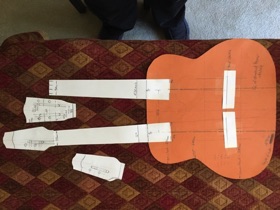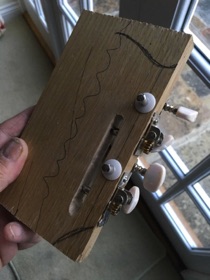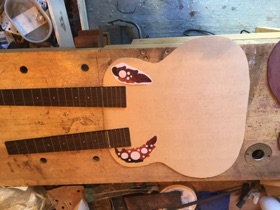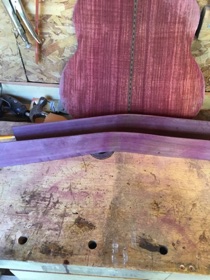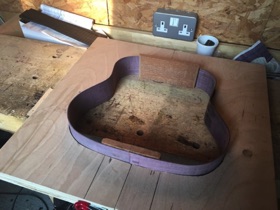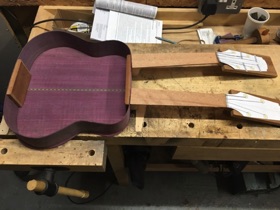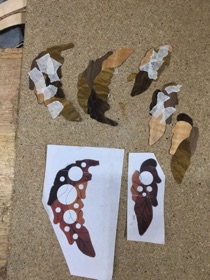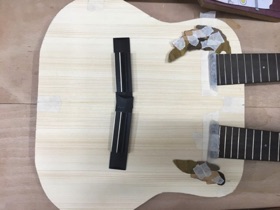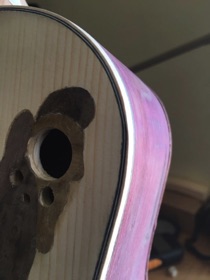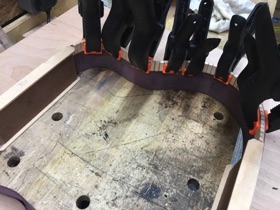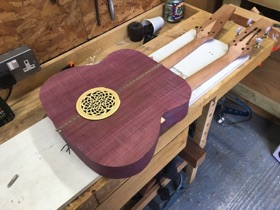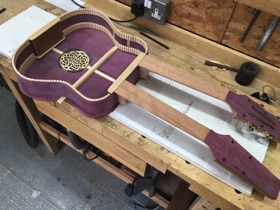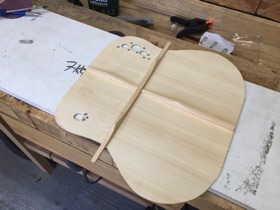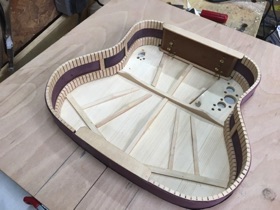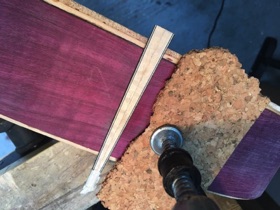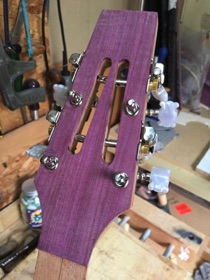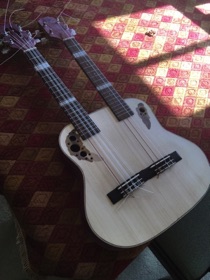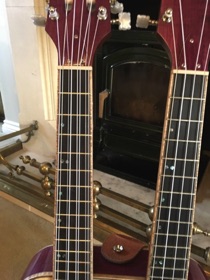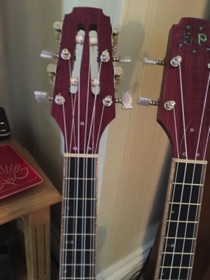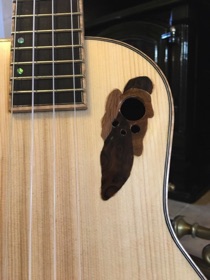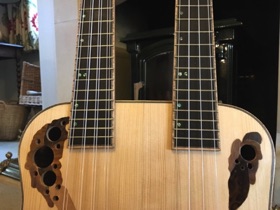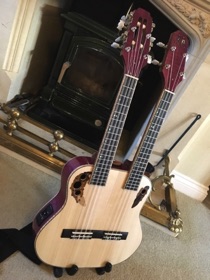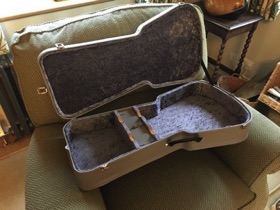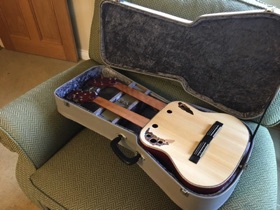DOUBLE NECK UKULELE

A luthier’s work is not limited to building guitars. A ukulele is a good alternative.
Rather than producing more and more of the same thing I decided to try something a little different so I designed this double neck ukulele - one neck with 8 strings and the other with 4 strings.
Double neck instruments are not new. There are examples dating back to the 17th Century, but they were never really popular. A double neck instrument is rather ungainly but is effectively two instruments. In this case it's an 8 string and 4 string with identical tunings, but it could have different tunings. Both bridges have an under-saddle pickup so that each side can be amplified differently.
The soundboard is Adirondack whilst the back and sides are Purple heart.
The fretboards and bridges are ebony.
In an attempt to keep both heads roughly the same size I put half of the 8 string tuning machines through slots. This is not a new idea - Rickenbacker employ this method of reducing the head-length on their 12 string electric guitars.
I wanted to try my hand at inlaying so I scaled down some Ovation-style ‘grape leaves’ and inlayed the design onto the soundboard using an assortment of exotic wood veneers. Whilst it may look good, it has more drawbacks than advantages.
All instruments with multiple necks are vulnerable to catastophic damage if pressure is applied to both necks at the same time. So it's important that you do not lean one neck on, say, a table whilst you're playing the other neck. Similarly you should avoid banging one neck against something whilst holding the other. I call it the -chicken wishbone effect-.
Future plans include a baritone/tenor combination, possibly with both necks having 8 strings.

Click on a picture below to begin a slide show
